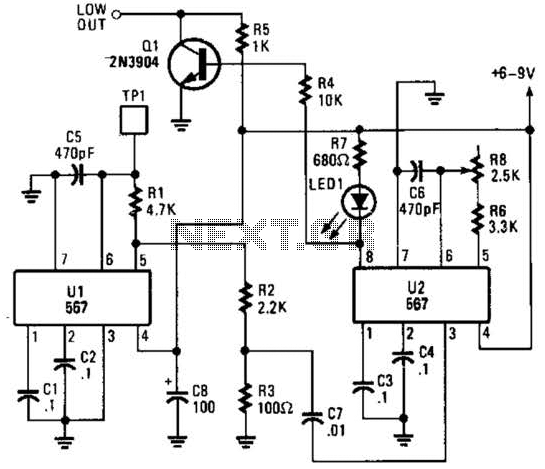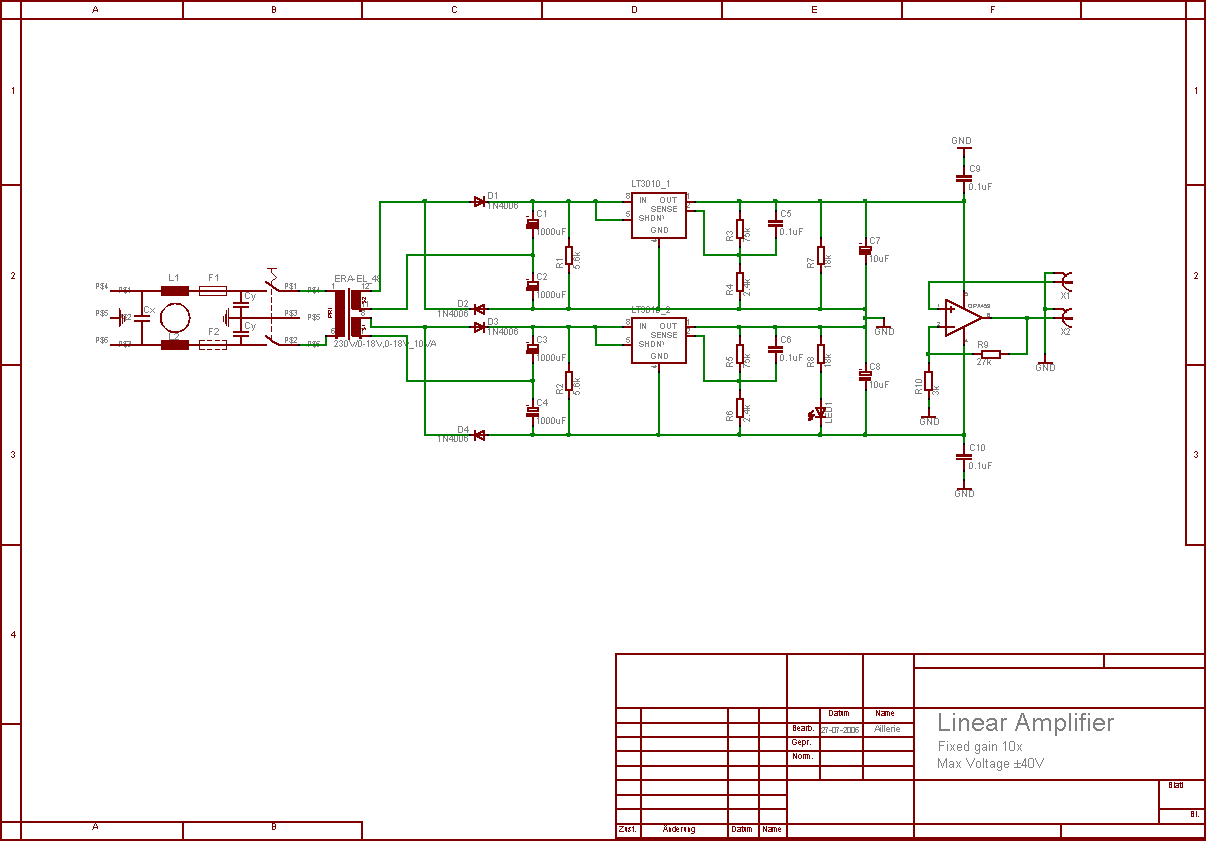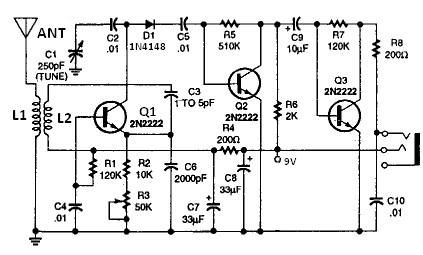
Wien Bridge Oscillator Circuit

This is a circuit known as a Wien bridge oscillator. The circuit features both positive and negative feedback loops and operates under the control of an operational amplifier (op-amp). The oscillation frequency is determined by the RC time constant, resulting in a sinusoidal waveform at the output voltage (Vout). This circuit is commonly employed as a sine wave generator using a rail-to-rail op-amp.
The Wien bridge oscillator is a type of electronic oscillator that generates sine waves. It utilizes a combination of resistors and capacitors to create a feedback network that establishes the frequency of oscillation. The circuit typically consists of an op-amp configured in a non-inverting amplifier configuration, where the gain is controlled by the resistive elements in the feedback loop.
The key components of the Wien bridge oscillator include two resistors (R1 and R2) and two capacitors (C1 and C2) arranged in a bridge configuration. The resistors and capacitors are selected to set the desired frequency of oscillation, which can be calculated using the formula:
f = 1 / (2πRC)
where R is the resistance and C is the capacitance in the feedback network. The op-amp amplifies the signal, and the feedback loop ensures that the output oscillates at the calculated frequency.
To maintain stable oscillation, the circuit requires a method for automatically adjusting the gain of the op-amp. This is often accomplished using a thermistor or a light-dependent resistor (LDR) in conjunction with a variable resistor to provide the necessary gain control. This automatic gain adjustment helps to stabilize the amplitude of the output signal and prevents distortion in the waveform.
The output of the Wien bridge oscillator is a clean sinusoidal waveform, making it suitable for various applications, including audio signal generation, function generators, and testing equipment. The use of a rail-to-rail op-amp enhances the performance of the circuit by allowing the output voltage to swing close to the supply rails, maximizing the usable output range. The Wien bridge oscillator is valued for its simplicity, stability, and effectiveness in producing high-quality sine wave signals.This is a circuit that is known as wien bridge oscillator circuit. The circuit has positive and negative feedback loop. This circuit is work with control by op amp. This is the figure of the circuit. The circuit oscillates at a frequency determined by the RC time constant at frequency and produces a sinusoidal waveform at the output voltage Vout. In many cases this circuit is used as sine wave generator which is using rail to rail op amp. [Schematic`s diagram source: Advanced Linear Devices, Inc] 🔗 External reference
The Wien bridge oscillator is a type of electronic oscillator that generates sine waves. It utilizes a combination of resistors and capacitors to create a feedback network that establishes the frequency of oscillation. The circuit typically consists of an op-amp configured in a non-inverting amplifier configuration, where the gain is controlled by the resistive elements in the feedback loop.
The key components of the Wien bridge oscillator include two resistors (R1 and R2) and two capacitors (C1 and C2) arranged in a bridge configuration. The resistors and capacitors are selected to set the desired frequency of oscillation, which can be calculated using the formula:
f = 1 / (2πRC)
where R is the resistance and C is the capacitance in the feedback network. The op-amp amplifies the signal, and the feedback loop ensures that the output oscillates at the calculated frequency.
To maintain stable oscillation, the circuit requires a method for automatically adjusting the gain of the op-amp. This is often accomplished using a thermistor or a light-dependent resistor (LDR) in conjunction with a variable resistor to provide the necessary gain control. This automatic gain adjustment helps to stabilize the amplitude of the output signal and prevents distortion in the waveform.
The output of the Wien bridge oscillator is a clean sinusoidal waveform, making it suitable for various applications, including audio signal generation, function generators, and testing equipment. The use of a rail-to-rail op-amp enhances the performance of the circuit by allowing the output voltage to swing close to the supply rails, maximizing the usable output range. The Wien bridge oscillator is valued for its simplicity, stability, and effectiveness in producing high-quality sine wave signals.This is a circuit that is known as wien bridge oscillator circuit. The circuit has positive and negative feedback loop. This circuit is work with control by op amp. This is the figure of the circuit. The circuit oscillates at a frequency determined by the RC time constant at frequency and produces a sinusoidal waveform at the output voltage Vout. In many cases this circuit is used as sine wave generator which is using rail to rail op amp. [Schematic`s diagram source: Advanced Linear Devices, Inc] 🔗 External reference





